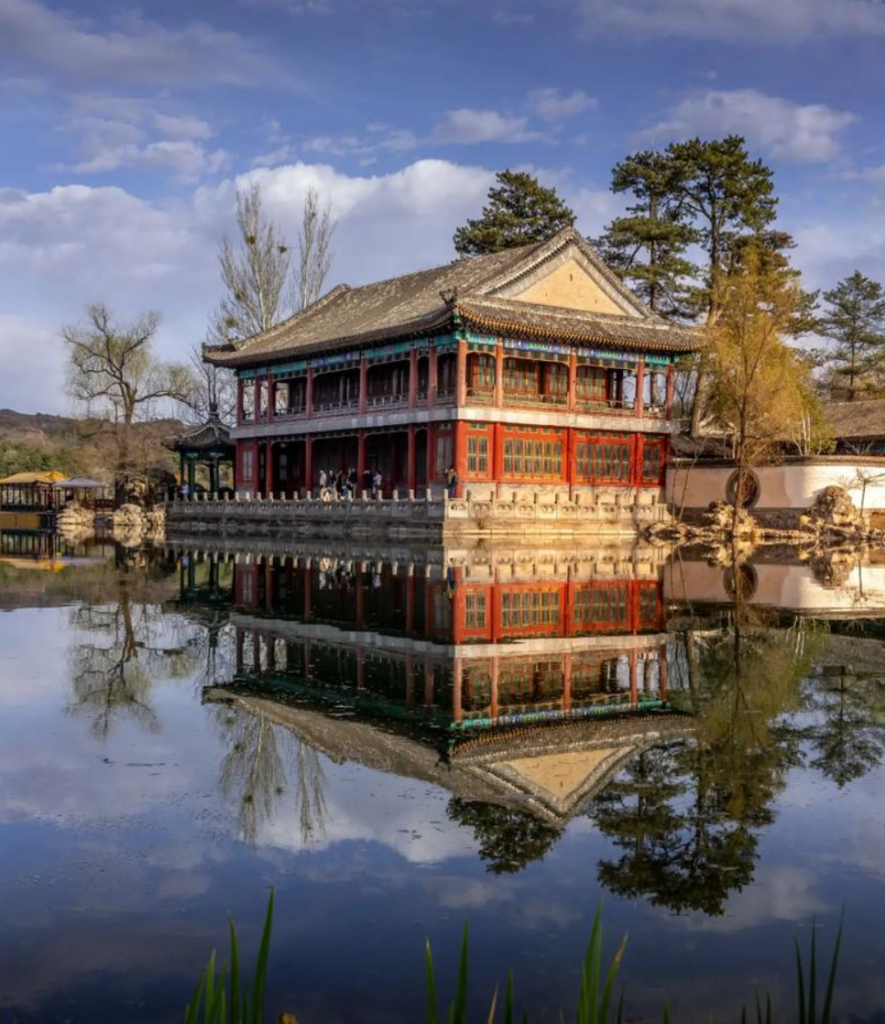Chengde Mountain Resort: China’s Imperial Summer Retreat
Nestled in Chengde, Hebei Province, Chengde Mountain Resort (Bishu Shanzhuang in Chinese) is one of China’s most magnificent imperial gardens and a UNESCO World Heritage Site. Built between 1703 and 1792 during the Qing Dynasty, it served as a summer palace for emperors—offering escape from Beijing’s sweltering heat and a venue for political meetings with ethnic leaders. Today, it stands as a living museum of Qing Dynasty architecture, landscape design, and royal culture.

A Blend of Natural Beauty and Imperial Grandeur
Covering 5.64 square kilometers, the resort combines four distinct zones, each with unique charm:
- Palace Area: The heart of the resort, where emperors lived and worked. The main buildings, like the “Main Palace” (Zhengong) and “Longevity Palace” (Changshengyuan), feature simple yet elegant Han – style architecture—unlike the grandeur of the Forbidden City, reflecting the emperor’s desire for a “quiet retreat.” Inside, exhibits of imperial furniture, calligraphy, and porcelain showcase Qing royal life.
- Lake Area: Often called “Little Jiangnan” (Mini South China), this zone has 8 lakes connected by winding paths and stone bridges. The “Lotus Flower Market” (Huatang) by the lake is a highlight—during summer, lotus blooms carpet the water, and traditional pavilions offer shade for visitors to enjoy the serene views.
- Plain Area: Once used for imperial hunting and horse riding, this open grassland now has ancient pine forests and the “Lotus Flower Garden” (Lianhuachi). It’s a perfect spot for picnics or leisurely walks, with views of the surrounding mountains.
- Mountain Area: Covering 80% of the resort, this zone has 44 hills and 26 temples. Hiking trails lead to viewpoints like “Lotus Flower Peak” (Lianhuashan), where you can see the entire resort and Chengde city in the distance.
Cultural Significance: Beyond a Summer Retreat
The resort was more than a vacation spot—it played a key role in Qing Dynasty politics. Emperors like Kangxi and Qianlong held meetings here with Mongolian, Tibetan, and Uyghur leaders, strengthening unity across ethnic groups. Nearby “Eight Outer Temples” (Ba Waidian), built in different ethnic architectural styles (Tibetan, Mongolian, Han), further reflect this cultural integration. For example, the “Putuo Zongcheng Temple” mimics Tibet’s Potala Palace, while the “Xumifushou Temple” combines Han and Tibetan designs.
Practical Tips for Visitors
- Best Time to Visit: May to October. September, like the Great Wall, offers mild weather (10°C–24°C) and fewer crowds than summer.
- Opening Hours: 8:00 AM–5:30 PM (April–October); 8:30 AM–4:30 PM (November–March).
- Ticket: ¥145 (peak season, April–October); ¥90 (off – season). Combine with “Eight Outer Temples” tickets for a full cultural experience.
- Transport: From Chengde Railway Station, take Bus 10 or 28 to “Mountain Resort East Gate” (30 minutes, ¥2). Wear comfortable shoes—exploring the mountain and lake areas involves walking.
Chengde Mountain Resort is more than a garden—it’s a symbol of China’s imperial history and cultural diversity. Whether you’re admiring imperial palaces, wandering lakeside paths, or hiking mountain trails, it offers a peaceful escape into the grandeur of the Qing Dynasty.
